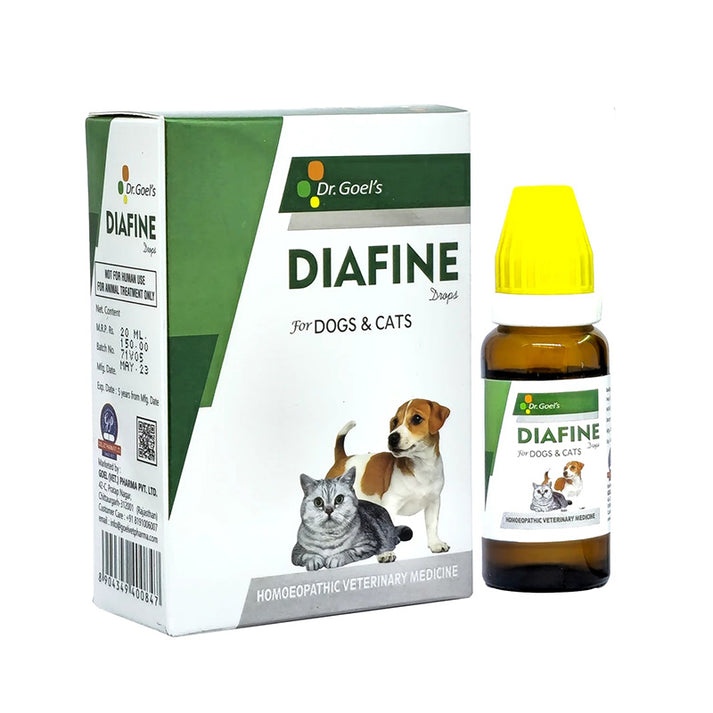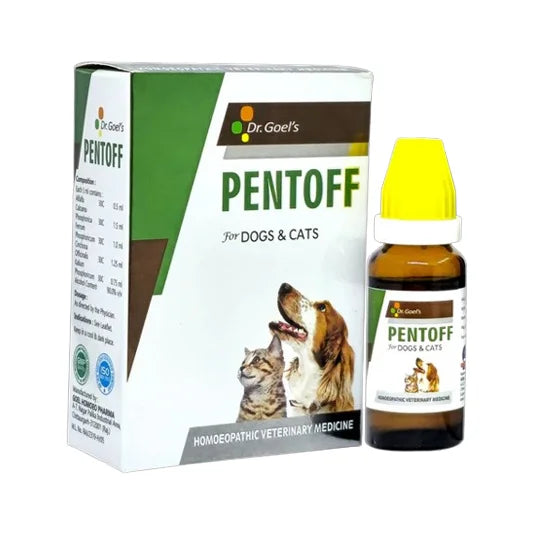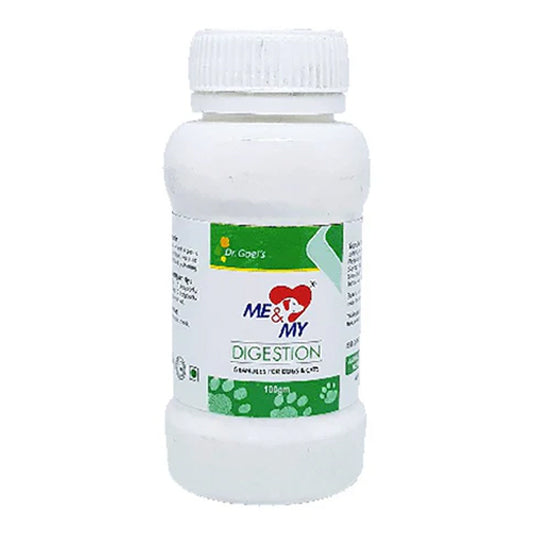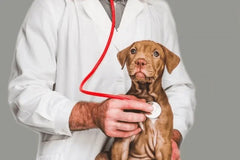
Canine Parvovirus: Symptoms, Treatment, and Prevention
Parvovirus Infection In Dogs
Canine parvovirus is a highly contagious virus that commonly causes gastrointestinal disease in — young, unvaccinated dogs. Signs include – anorexia, lethargy, vomiting and diarrhea which is often hemorrhagic. Parvovirus comes from Latin word “Parvus” which means small and probably due to this reason this virus is known as parvovirus. Dogs of all age groups may be infected but puppies of 3 months of age are highly susceptible than adults. This virus causes high morbidity (100%) and frequent mortality up to 10% in adult dogs and 91% in pups.
The Respiratory System: Dance Of The Incoming And Outgoing Air.
The respiratory system is important because it helps provide the body with the necessary elements of gases, such as oxygen, which help generate energy and power for the cells. The respiratory system is like a conducting system that conducts the good gas, oxygen, into the body and helps expel the carbon dioxide gas. Carbon dioxide is an excretory product, and this waste product must be efficiently expelled. At the same time, oxygen is transported inside the body, which plays an important role in helping nourish the cells. This system encompasses the nostril, the conducting system- and the lungs.
Although its exact origin is unknown, it is believed to have arisen from FELINE PANLUEKOPENIA VIRUS CPV, which probably arose as a result of two or three genetic mutations in FPV that allowed it to expand its host range to infect dogs. It first emerged in dogs in Europe around 1976. By 1978, the virus had spread unchecked, causing a worldwide epidemic of myocarditis (inflammation of heart muscles) and inflammation of the intestines (gastroenteritis).
Outbreaks of CPV have been reported in many countries, including India. Balu and Thangarajin Madras first said the prevalence study in India. The disease pattern experienced in a population is influenced mainly by the host’s susceptibility, environmental conditions such as housing, hygiene, population density, and the pathogenicity of the infectious agent.
Different strains of canine parvo virus.
Three slightly different canine parvoviruses named CPV-2a, CPV-2b, and CPV-2c are recognized. They cause the same disease, and vaccine gives protection against each. CPV-2B is associated with the most severe disease. A distinct type of parvovirus (CPV-1) has been found in pups with diarrhea in normal dogs. CPV-1 is now believed to be an important cause of disease.
Young (6 weeks to 6 months old) unvaccinated or incompletely vaccinated dogs are most susceptible. Although severe clinical disease typically occurs in dogs younger than 6 months of age, adults with insufficient immunity may be affected. CPV-2 is ubiquitous and can survive in the environment for more than a year, enabling exposure of susceptible dogs to infected faeces, vomitus, or fomites. Breeds described at increased risk include-
- Rottweiler’s
- Doberman pinschers
- American Pit Bull Terriers
- English Springer Spaniels
- German Shepherds
- Labrador Retrievers
- Doberman, Rottweiler, and German shepherd (GS) dogs have been reported to be more susceptible to CPVE than other breeds. Due to inherited immunodeficiency, the exceptional breeds, German Sphered and Doberman, are extra prone than the different breeds. The German shepherd has the highest CPV infection rate (70%), followed by the Doberman (55%).
Assuming sufficient colostrum ingestion, puppies born to a dam with CPV antibodies are protected from infection for the first few weeks of life. However, susceptibility to infection increases as maternally acquired antibodies wane.
Risk Factors
- Breed predisposition.
- Possible simultaneous conditions, diseases, or drug therapy that lead to an inability to develop a normal immune response (known as “immunosuppression”), such as heavy parasitism.
- Incomplete vaccination protocol, vaccine failure, or regular interference of the doggy creates protecting antibodies due to maternal antibodies.
- Breeding kennels, pounds, shelters, and areas with an excessive quantity of pups besides ample immune response or inadequately vaccinated puppies.
Etiology:
CPV is a small, non-enveloped, single-stranded DNA virus that replicates in the nucleus of dividing cells in the late S phase or early G2 phase of the cell cycle.
Pathogenesis:
Once a dog or puppy is infected, there is an incubation period of 3-7 days before the onset of the first symptoms. CPV wants the assistance of swiftly dividing cells to motivate disease correctly, and the virus commonly starts evolving with the aid of attacking the tonsils or lymph nodes of the throat. Once inside the lymph nodes, the virus typically invades lymphocytes for one or two days, creating copies of itself, then enters the bloodstream. Many of these CPV-infected lymphocytes are ultimately killed, causing a reduction in the number of circulating lymphocytes (lymphopenia).
Once in the bloodstream, the virus again targets rapidly dividing cells, hitting hardest in the bone marrow and the cells lining the wall of the small intestine. In very younger dogs, CPV can also infect the coronary heart, leading to irritation of the coronary heart muscle, terrible characteristics, and arrhythmias.
The virus invades the crypts of lieberkuhn of the small intestine, where new epithelial cells are born and disable the body’s ability to replenish the intestinal surface, rendering it unable to adequately absorb nutrients, prevent fluid loss into the stool or prevent bacteria from moving from the gut into the body. Severe diarrhea and nausea are the initial results. Still, eventually, the intestinal surface can become so damaged that it begins to break down, and the bacteria normally confined to the gut penetrate the intestinal wall and enter the bloodstream.
The virus is shed in the feces of infected dogs within four to five days of exposure, throughout the period of illness, and for up to 10 days after clinical recovery. Infection is received thru direct oral or nasal contact with virus-containing faces or circuitously thru contact with virus-contaminated fomites.
Transmission & Infection risk
Canine parvovirus is unfolded with the aid of direct contact with a contaminated canine or sniffing or ingesting contaminated faces. Infection can also spread through contact with items contaminated with the virus, such as shared bedding, bowls, soil, or even people’s hands or clothing, and in this way, the virus can be passed from one dog to another. Washing hands thoroughly with soap and water will remove the virus. Specific disinfectants want to be used to eliminate parvovirus from the environment, including toys, garb, and cages.
Can people get sick with it? No, contamination with dogs parvovirus has now not been documented in people. However, people can spread it to other dogs if they have the virus on their hands or clothing and then touch other dogs or their environment (e.g., kennel, toys, grooming tools).
Clinical signs:
Clinical signs of parvovirus enteritis generally develop within 5-7 days of infection but can range from 2-14 days. Signs generally include severe vomiting and diarrhea. Diarrhea often has Avery strong smell, may contain a lot of mucus, and may or may not contain blood.
-
-
- Loss of energy, sluggishness (lethargy), lack of appetite (known as “anorexia”), vomiting, and profuse diarrhea with rapid, severe weight loss
- Rapid heart rate (known as “tachycardia”)
- Moist tissues of the mouth and eyes (known as “mucous membranes”) may also be faded or deep red due to the blood vessels being crammed with blood (known as being “injected”) or yellowish (known as being “icteric” or “jaundiced”)
- Dehydration
- Pain or soreness when the veterinarian feels the stomach (known as “abdominal palpation”)
- Intestines may be fluid-filled, or rarely, the veterinarian may detect the folding of one segment of the intestine into another segment (known as “intussusception”)
- May have a fever, or the body temperature may be lower than normal (known as “hypothermia”)
- May exhibit vomiting/diarrhea in the examination room.
-
The bacterial translocation from the intestine to systemic circulation can cause fever, systemic inflammatory response syndrome, and septic shock with hypotension and organ failure. Apart from diarrhea, respiratory distress, pulmonary congestion, and edema, alveolar and bronchiolar hemorrhage and convulsions are also occasionally manifested due to hypovolemia, endotoxic, and septicemic shock. The malabsorption of nutrients and inadequate storage of glycogen in muscle and liver result in hypoglycemic encephalopathy, which leads to seizures. On hospital admission, the prognosis is poor in CPVE dogs with intussusception, systemic inflammatory response syndrome, and severe leucopenia.
Diagnosis:
Canine PVE has clinical similarities with other causes of acute gastrointestinal disturbances, including, though not limited to, canine distemper infection and another viral enteritis, hemorrhagic gastroenteritis, enteric bacterial infections such as salmonellosis, acute pancreatitis, hypoadrenocorticism, inflammatory bowel disease, intestinal intussusception, gastrointestinal overseas bodies, and quite a number intoxications. Therefore, clinical diagnosis of PVE necessitates the combination of compatible clinical and clinicopathologic abnormalities along with detecting the viruses in the feces by electron microscopy, virus isolation, fecal antigen tests, or PCR Assays of feces or blood. Fecal antigen assays and PCR assays are used most frequently in clinical practice.
Prognosis:
The prognosis with CPV- 2 associated gastrointestinal diseases can be poor. However, with fast and gorgeous supportive care, many domestic dogs will survive.
The survival rate of dogs is 68-92%, and most puppies that survive the first 3-4 days make a complete recovery. It normally takes about one week for domestic dogs to get better from parvo.
Treatment:
No specific drug is available, and the treatment is intended to support the dog’s body systems. The principal components of supportive and symptomatic therapy include:
- Fluid therapy and oncotic support,
- Antibiotics
- Antiemetic
- Nutritional support.
A vast vary of different cure measures, including, although no longer restricted to, antiviral redress and ache administration, have been assessed in the previous or are presently under investigation involving their potential utility in CPVE. Other GI-supportive therapies, like bland diets and probiotics, are often prescribed during recovery.
Possible Complications
- Generalized bacterial infection (sepsis)
- Presence of bacterial toxins in the blood (endotoxemia)
- Shock
- Intussusception (the folding of one segment of the intestine into another segment)
- Blood clotting disorder (disseminated intravascular coagulopathy)
- Acute respiratory distress syndrome (ARDS)
Expected Course :
- If the doggy recovers, recuperation is commonly complete; immunity following canines parvovirus contamination is a lengthy-time period and might also be lifelong.
- Mortality is primarily due to the presence of bacterial toxins in the blood (endotoxemia)
- Aggressive remedy improves survival. However, mortality prices can also nonetheless strategy 30%
Prevention and control:
The great technique of defending your canine in opposition to CPV contamination is suited to vaccination. It is recommended to be given at 8,12, and 16 weeks of age.in some high-risk situations, veterinarians will give the vaccine at 2 weeks intervals, with an additional booster administered at 18-22 weeks of age. If an approved 3-year parvovirus vaccine were used, the next booster vaccine would be routinely administered in three years.
Pregnant ladies may be boosted with a killed parvovirus vaccine two to 4 weeks earlier than whelping to switch greater degrees of shielding antibodies to the puppies.
The tiny parvovirus is extraordinarily hardy. They are capable of surviving for months outside an animal, even through the winter, and are resistant to most household cleaning products. Infected puppies can shed full-size numbers of viruses, making it challenging to disinfect a place as soon as it has been uncovered to a contaminated dog. These facts highlight the importance of isolating any dog that is infected with CPV from other dogs. Given the truth that most environments (including canine parks, lawns, and even homes) are now not cleaned with disinfecting products regularly, a pup can be uncovered to CPV barring any warning, making vaccine safety all the extra important.
If your domestic and yard have been contaminated via a contaminated dog, there are steps you can take to disinfect them earlier than introducing a new canine or puppy. Despite its relative resistance to cleansing agents, we do understand that CPV can be inactivated through bleach. Cleaning with an answer of phase bleach blended with about 30 components of water is a desirable approach for disinfecting any indoor place (including bedding, food/water bowls, and all surfaces) that once housed an infected dog. There is evidence suggesting that CPV loses some of its ability to infect an animal after one month in an indoor environment.
Conclusion:
CPV-2 is one of the huge viral enteropathogens of canines inflicting excessive morbidity and mortality and manifested via vomition and extreme acute hemorrhagic gastroenteritis. Prompt symptomatic remedies will expand the survivability of contaminated domestic dogs; however, vaccination is a nice way to stop the disorder in dogs.
Although the pups are protected through vaccination from the pregnant bitch, it is more vulnerable to CPV-2 infection as maternal antibody titers start declining. Despite the availability of highly sensitive and specific diagnostic approaches and effective prophylactics such as modified live virus and inactivated vaccines, a large number of outbreaks are still reported in wide geographical areas across the globe in both vaccinated and unvaccinated dogs.
Future studies should be taken up towards vaccination failures, the occurrence of CPV-2 in different canine species, and the emergence of antigenic variants of the CPV-2 involved in the outbreaks.
By-
Dr. Anshula
HOMEOPATHIC SOLUTION FOR PARVO VIRUS ISSUES IN PETS

DIAFINE FOR PARVO VIRUS IN DOG AND CAT
DIAFINE DROPS for pets is the best remedy for DIARRHOEA, it is a unique Homeopathic Veterinary Medicine, proven to be effective in treating different types of diarrhea in dogs & cats. Diarrhea of any underlying cause like bacterial, viral, or verminous can be treated by DIAFINE DROPS. Even bloody diarrhea in PARVO viral infection can be improved.

PENTOFF FOR ANOREXIA ISSUES IN DOG AND CAT
PENTOFF DROPS is a superb homeopathic formulation exclusively for pets. It is very effective and efficient in improving anorexia in dogs and cats, which could be due to any of the underlying causes like fever, vomiting, diarrhea, deficiency, anemia, anxiety, constipation, liver problems, or any unknown acute or chronic illness, etc.

ME & MY DIGESTION TO IMPROVE PETS DIGESTION
Me & My DIGESTION Pet Supplement is a unique formula of valuable supplements for Dogs & Cats which help maintain the gut health of your lovable pets. It thus maintains the pH of the gut during gastric disturbances like biliary obstruction, vomiting, dyspepsia, food poisoning, or any other and protects your pet’s health. 







